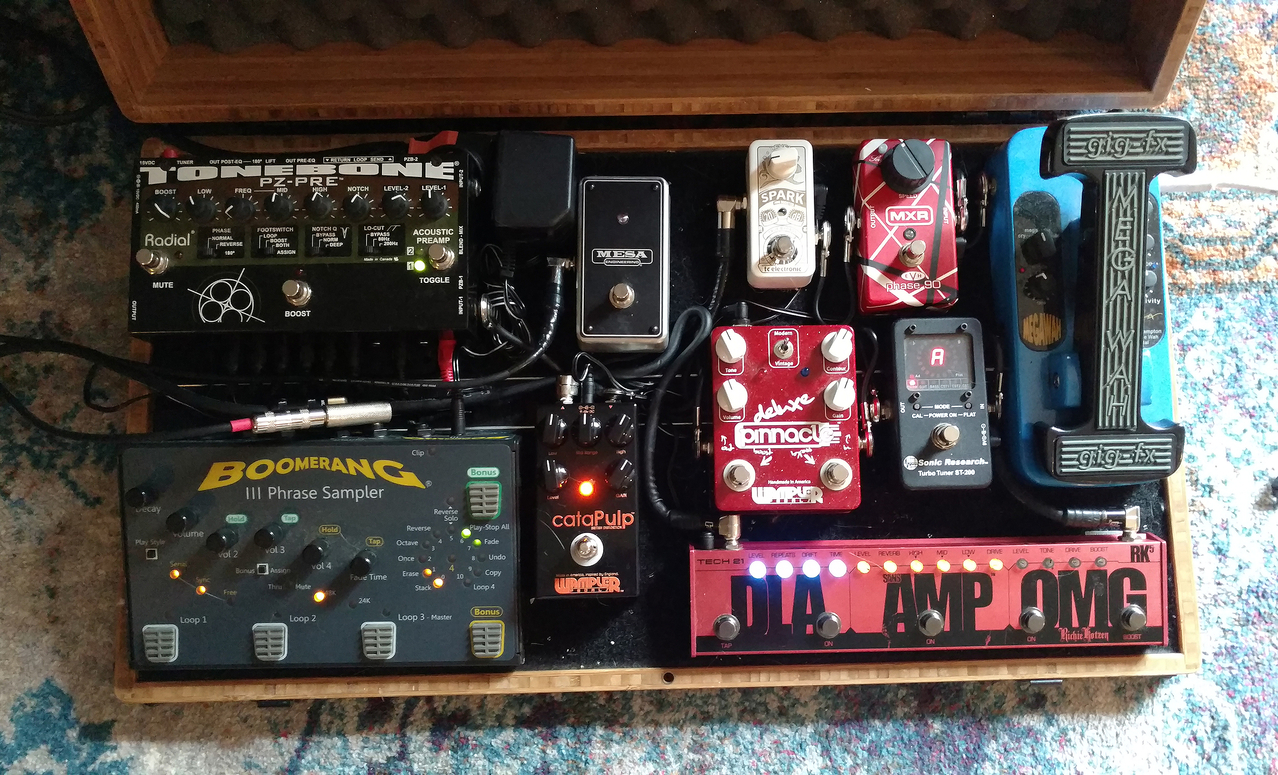Help!I'maRock!
Mediocringly Derivative
When you have a pedal for a long time, sometimes you forget.
Or, you're senile.

When you have a pedal for a long time, sometimes you forget.

Or, you're senile.
Another way is when you accidentally plug your guitar into the out and your amp into the in. Your sound goes through until you step on the switch, then no sound. Can you imagine what kind of dumb ass does that and then thinks he got a broken pedal?



I accidentally did that with my Boomerang because the four connections (two ins, two outs) are up on top and for SOME DAMNED REASON the INPUTS are on the top LEFT and the OUTPUTS are on the top RIGHT.
That's why on my pedalboard photo, you may notice that my output cable has a right angle plug that drapes across the input cables.

In the photo above, there's a right angle adapter on the end of the straight cable.... later that day I soldered 90 degree ends on it and on my mesa channel switch cable.
There was a time that buffers were not good. That time has passed because the boutique industry forced the major manufacturers to improve their products. It took 20 years for that change to occur. It's a completely different market now.
I wouldn't put Boss in that category, though. Their buffer has ALWAYS been pretty darned good. YMMV, of course.
Which, by the way, we need to add a "corksniffer" emoji to the board, Mark....

If you're hearing a difference between t/b and buffered bypass, you're probably sitting alone in your basement. Try that test in a live situation. I have a mix of both types of bypass, I could really give a shit about either one. If the pedal sounds right, it IS right, end of story. Anything else is pure corksniffery.
I accidentally discovered a way to test if your pedals are true bypass or not.
When rewiring my pedalboard this weekend, I got all the audio cables run, and then ran some power... plugged in and tested. Sounded good but then some of my pedals didn't work......
.... I forgot to run power to some of them.
They were true bypass so when they were switched off, the signal still passed right through them. Now I know if I damage a power cable before a gig, which pedals I can leave hooked up but move the power to a different one without upsetting the signal path.
I ended up buying different looking cables, one for guitar to board and one for board to amp. I always buy used pedals, so when I get them, I plug directly into the pedal to test them out before messing with the board. So when your cables are identical, it is easier than you think put the wrong one in.
We have this guy
:snooty:
used to have this guy:


When it comes to individual pedals I'd agree, but both pedals have their place. Buffered pedals are useful for bringing back the high end you can lose with a lot of cabling (i.e. cable from amp to pedal board, all true bypass pedals and then back to amp). This video illustrates it pretty well:
So it's not a matter of an individual pedal being better because it's buffered or true bypass, but in the context of your whole rig buffered/true bypass will make a difference.
